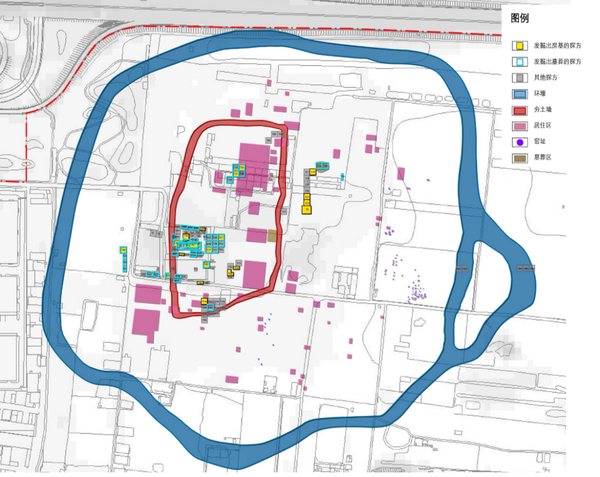Towards Civilization⑤|Dahecun: a shining pearl of Yangshao Culture
"We should attach more importance to and put more efforts on archaeological research to carry forward the project of tracing the origins of Chinese civilization," stressed Chinese President Xi Jinping during his recent inspection tour to Anyang city, Henan province. Henan, cradle of the Chinese nation and civilization, is not only the birthplace of modern Chinese archaeology, but also the core area for tracing the origins of Chinese civilization. Together with the Development and Reform Commission of Henan Province and the Administration of Cultural Heritage of Henan Province, we are launching the "Towards Civilization" bilingual series featuring 13 key archaeological sites in Henan to help you catch a glimpse of wonderful Henan and brilliant Chinese civilization. Here is the 5th episode of the series: Dahecun: a shining pearl of Yangshao Culture.
近日,习近平总书记考察了殷墟遗址,提出考古工作要继续重视和加强,继续深化中华文明探源工程。河南是中华民族和中华文明的重要发祥地,中国现代考古学从河南起步,中华文明探源从河南开始。2022年11月5日起,大河网联合省发展改革委、省文物局推出《追寻文明的足迹》系列报道,一起走进厚重河南。今日推出第五期:《仰韶文化的时代标尺——大河村遗址》。
Click on the video
Mainly distributed in the Yellow River basin, the Yangshao Culture (around 5,000-2,700 BC) is considered the root of the Yellow River culture. The area ranging from Zhengzhou city to Heluo region (where the Yellow River and the Luohe River meet) witnessed a new peak of the Yangshao Culture since the mid-to-late Yangshao Culture flourished there. Many large settlement sites are distributed in the regional center in the form of clusters, of which the Dahecun site is representative.
主要分布于黄河流域的仰韶文化是黄河文化的主根脉。在仰韶文化分布区偏东区域的河南郑州以西至河洛地区,仰韶中晚期文化也十分繁盛,是仰韶文化发展的又一高峰。区域中心性大型聚落遗址呈集群状丛体状分布,聚落规模普遍较大,郑州大河村遗址就是其中的典型代表。

The Dahecun site. [Photo provided to dahe.cn]
Located in the northeast suburbs of Zhengzhou and first discovered in 1964, the Dahecun site is 7 kilometers north of the Yellow River. Nearly 10 thousand square meters have been excavated over the past 29 rounds of excavations, with the first beginning in as early as 1972. With ring moats, the site is roughly round in shape and covers a total area of about 530 thousand square meters. A densely-populated residential area is located in the site's center with a public cemetery in its northeast and southwest respectively. As a great settlement site where a large number of cultural relics of the Yangshao Culture, Longshan Culture (about 3,000-2,000 BC), Xia and Shang dynasties (around 2070-1046 BC) were discovered, the Dahecun site was selected into the 5th batch of key historical and cultural sites under national-level protection in 2001.
大河村遗址位于郑州市中州大道与连霍高速交叉口的东南隅,北距黄河7公里。遗址发现于1964年,1972年进行首次考古发掘,至今陆续发掘29次,揭露面积近万平方米。研究表明,遗址平面近似圆形,环壕围绕,面积约53万平方米。遗址中部岗地为密集的居住区,东北和西南各有一处公共墓地。该遗址是一处包含有仰韶文化、龙山文化和夏商时期文化遗存大型古代聚落遗址,2001年被国务院公布为第五批全国重点文物保护单位。

Building foundations. [Photo provided to dahe.cn]
So far, 60-plus building foundations, 400-plus tombs and 600-plus ash pits have been discovered with over 3 thousand cultural relics unearthed, including pottery wares, jade articles and tools made of stones, bones or clams. It is worth noting that the F1-F4 building foundations dating back to around 5,040 years ago are well-preserved with the height of the remaining walls exceeding one meter. With a clear layout, they are of great significance to study the social structure at that time.
迄今为止,遗址清理出土房基60余座、墓葬400多座、灰坑600多座等遗迹,陶器、石器、玉器、骨器、蚌器等各类文物3000多件。众多的遗迹和遗物中,最为瞩目的是保存最为完好的距今5040年仰韶文化房基F1~F4,墙体残高1米有余,布局完整清晰,为研究当时的社会组织结构和性质具有十分重要的意义。

Pieces of painted pottery wares. [Photo provided to dahe.cn]
More importantly, the Dahecun site, while witnessing the early-to-late Yangshao Culture period, manifests all the different stages of Yangshao Culture development. The cultural remains of its 3rd and 4th stages are known as the Yangshao Culture·Dahecun Type because of their differences from other remains of the same period. The Yangshao Culture·Dahecun Type, representative of the Yangshao Culture and the early Yellow River culture, laid a solid foundation for the birth of Chinese civilization.
更为重要的是大河村仰韶文化发展序列完整,涵盖中原地区仰韶文化自早至晚的全过程,作为仰韶文化的时代标尺,其三、四期遗存在同类遗址中具有很强的代表性,被称之为仰韶文化大河村类型。大河村类型作为仰韶文化、黄河文化早期的重要代表,为华夏文明的诞生奠定了坚实基础。(编译/赵汉青 播音/杨佳欣 视频/何蒙贺 审校/张军平)
Related stories
相关阅读
Towards Civilization①|Jiahu site, where Chinese civilization starts
Towards Civilization②|Yangshao village, birthplace of modern Chinese archaeology
Towards Civilization③|Miaodigou witnessed the prosperity of Yangshao Culture
追寻文明的足迹③|仰韶文化繁荣期的“文明之花”——庙底沟遗址
Towards Civilization④|Ancient 'Heluo Kingdom' in Gongyi, Henan
Towards Civilization⑥|Discover earliest China at Erlitou site in Luoyang, Henan
Towards Civilization⑩|Capital city ruins of Eastern Zhou Dynasty in Luoyang
Towards Civilization⑪|City ruins of Luoyang from Eastern Han to Northern Wei dynasties
Towards Civilization⑫|City ruins of Luoyang from Sui to Tang dynasties
Towards Civilization⑬|Dongjing: An international metropolitan city during the Middle Ages
